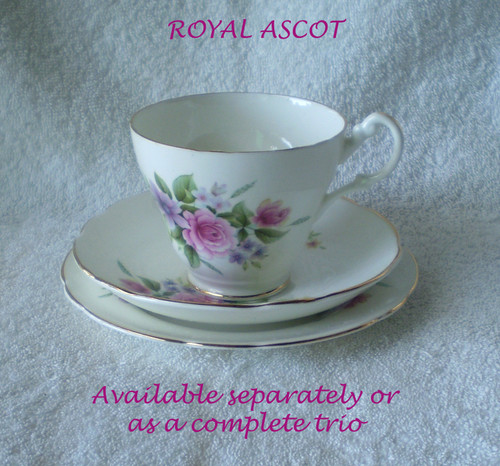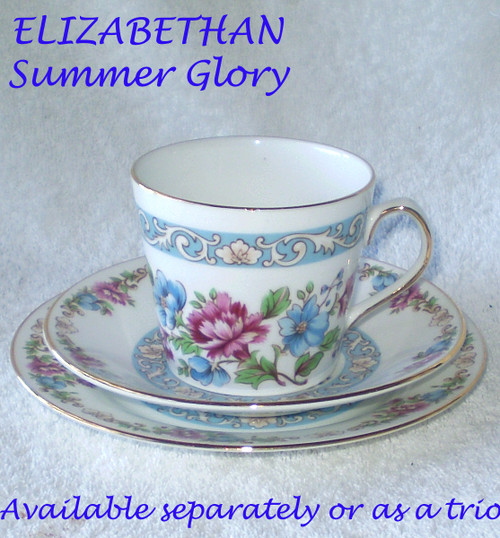HISTORY:
We are cleaning out our "overgrown" collection of English (mainly) chinaware because we have high quality chinaware coming out of our ears! Some pieces/collections we have kept but others must find new homes to accommodate our latest passion - fine, artistic 19th Century chinaware/ceramics (hand painted of course)
We cannot establish with accuracy the background to this trade name "Royal Ascot" but we do know for sure that it is not one of the special Royal Ascot series that were released by Royal Albert! Mixed information online but reliable English based resources just will not state exactly who used this trade name ... one thing for sure, be VERY wary of Google AI - it often spews rubbish when asked deep and meaningful questions about subjects such as English chinaware! Be warned ...
This is yet another of our floral trio's looking "sad and lonely" and it is seeking a new home that it may feel more comfortable in ... not surrounded by very very old china and porcelain!
To provide the utmost in flexibility, each piece is being offered individually (because from experience often only one piece is needed by others and not a complete set or trio) HOWEVER you can use the drop down menu on the front page and select ALL items if you wish to purchase the complete trio (and a discount is automatically applied in this case) ... assuming that someone hasn't already bought just one or two pieces beforehand.
ROYAL ASCOT - Side Plate/Saucer/Teacup Set (Trio offered separately)
Made In England
Price indicated is for EACH PIECE, however if all three pieces are selected then an automatic discount does apply in the checkout
1970's ~ 1980's
Bone China
Tradename: Royal Ascot
Manufacturer is unknown
Pattern: Name or code number for this pattern is not known
The saucer, side plate and teacup are quite a standard shape, the teacup having a handle which looks similar to a "Queen Anne" uplifted style.
Pure White base china with the floral decoration comprising "flowers of the garden", colouring being Pink, Lavender and some Yellows with foliage. Decoration is quite standard in that it comprises of two graphics, one being much larger than the other.
These are definitely transferware decorations, not hand painted although it does appear that the Gold gilding has been hand applied (Gilder's mark to the underside)
Light scalloping to all of the rims, which is finished in Gold. The teacup also has additional Gold band gilding around the foot and down the back of the handle.
Translucent, meaning if any of the pieces are held up to a strong light source you can see the shadows of your fingers through the china
BACKSTAMPS:
Makers mark applied to the base of the teacup (under the glaze)
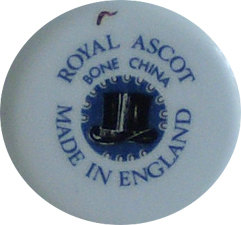
Makers mark applied to the base of the saucer (under the glaze)
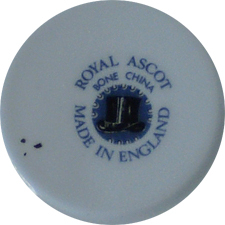
Makers mark applied to the base of the side plate (under the glaze)
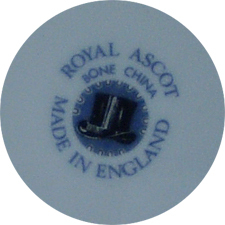
Gold gilder's markings to the underside of each piece
COSMETIC CONDITION:
This first section of the condition report is universal to all three pieces, any difference or flaws are below this section
NO cracks
NO chips
NO crazing
NO wear showing to the Gold gilded scroll work, not even the teacup handle (which is often the most susceptible area to wear by the user's fingers - nothing observed at all. Although there is no wear, you can see that a human has applied the guilding, it is sometimes not perfectly aligned with the rim ... this gives it that "human touch"!
NO staining of any kind inside the teacup
NO discolouration observed to the base china, nor the decorative patterning, particularly the central area of the saucer and side plate, these areas being susceptible to scratching, knife cuts etc ... but with these it is not the case, all are very clean and unscratched.
Specific cosmetic issues I noticed for each piece are ...
SAUCER:
On the underside this saucer has just a single 'dot' which is Brownish in colour (indicating a breakdown in the glaze) but to the finger it feels raised, as though there is an imperfection in the ceramic when it left the works and was not damaged at a later stage. I have just sprayed the 'dot' with ISO alcohol to kill off any bacteria that may remain under the glaze in an effort to prevent this discolouration becoming worse over time.
There are no other special comments on any piece

